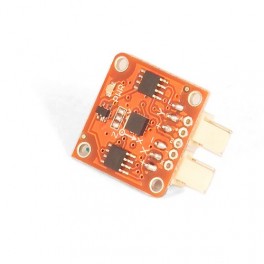 Maximize
Maximize TinkerKit 2/3 Axis Accelerometer
TinkerKit 2/3 Axis Accelerometer
Categories
 Maximize
Maximize TinkerKit 2/3 Axis Accelerometer
TinkerKit 2/3 Axis Accelerometer
An accelerometer is a device that measures acceleration. It is very common in consumer electronics such as portable electronic devices and video game controllers to detect movement using accelerometers.
Output: This module outputs 0V to 5V on one of its two signal pins when its G-force is changed (e.g. is moved). The value is approximately 2.5V when there is 0G on the X or Y axis. When you connect this module to the input on an Arduino using the TinkerKit Shield, you can expect to read values between 0 to 1023 while moving the module.
Module description: On the back of the module you can find two signal amplifier and a green LED that signals that the module is correctly powered. The module is based on theLIS344AL by ST Microelectronics, and is a three-axis acceremoter. You can get data about the third axis (referred to as Z) by soldering a header to the thru-hole labeled "Z".
This module is a SENSOR. The connector is an OUTPUTwhich must be connected to one of the INPUT connectors on the TinkerKit Shield.
Code Example